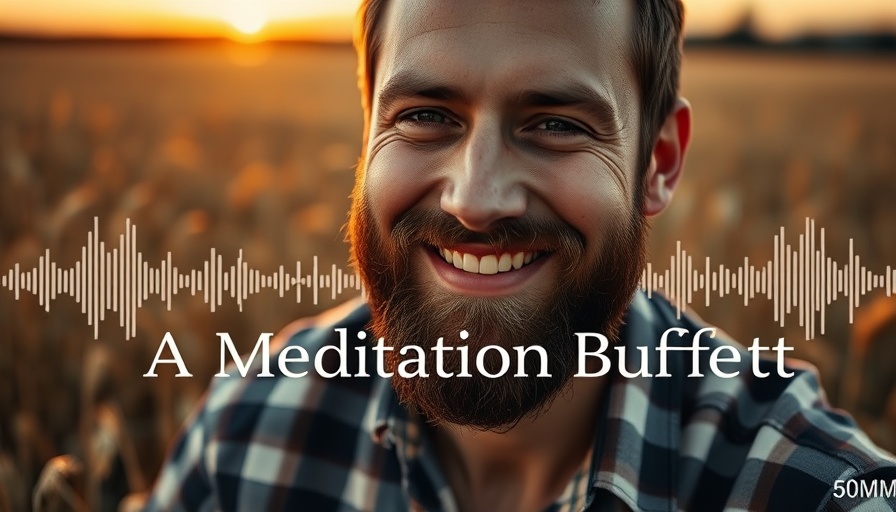
Discover Relaxation: 3 Distinct Techniques for Mindful Meditation
In the fast-paced world we live in, understanding how to find peace through meditation is essential. This week, renowned meditation teacher Toby Sola dives into the essence of meditation, offering a guide to three distinct types that cater to varying needs and perspectives. If you’ve ever been overwhelmed by the multitude of meditation styles, Sola’s approach provides clarity and invites you to experience a diverse range of practices.
The World of Meditation: A Diverse Spectrum
It's not unusual to feel confused about the various forms of meditation. Just like different sports come with their respective rules and cultures, meditation encompasses an array of practices, each with its unique flavor and focus. Some techniques may emphasize deep breathing, while others might encourage letting go of thoughts entirely. But at their core, they all share common goals: enhancing concentration, fostering clarity, and achieving emotional balance.
Techniques to Experience Today
Today, we’ll explore three distinct meditation techniques that are simple yet profound. Whether you’re new to meditation or looking to broaden your horizons, each offers a unique pathway to mindfulness.
1. Noting and Labeling: Tune into Your Surroundings
The first technique invites participants to lengthen their spine, relax their shoulders, and bring their awareness to the sounds around them. This practice falls under the category of “noting and labeling,” where you focus on auditory sensations—traffic, the rustling of leaves, or even total silence. It’s about observing rather than judging, allowing you to stay anchored in the present moment. As you notice distractions, simply redirect your attention back to the sounds, nurturing your ability to concentrate.
2. Nurture Positive Thoughts: Intentional Affirmations
The second technique is a “nurture positive” practice, where the goal is to intentionally create and focus on positive thoughts or affirmations. Rather than allowing thoughts to come and go at their own will, this technique encourages you to deliberately cultivate uplifting feelings. By reciting affirming phrases, you foster a positive mindset while reinforcing your ability to generate joy and gratitude, allowing your mind to experience a lighter, more uplifting state.
3. Letting Go: Embracing Unattachment
The third meditation encourages a non-focused approach. Rather than concentrating on thoughts or sensations, you remain open and loose, resisting the urge to anchor your attention anywhere. When thoughts arise, rather than engaging with them, simply let them drift away. This practice nurtures mental clarity, showcasing that sometimes the best approach is to embrace stillness rather than active engagement.
Benefits of Exploring Your Meditation Choices
Exploring different meditation techniques is akin to varying your diet or exercise routine—diversity can promote overall well-being. While some may prefer structured practices that involve focus and intention, others might thrive in the freedom of open awareness. Finding what resonates with you could enhance your daily mindfulness and help you navigate life’s stressors.
Common Misconceptions About Meditation
A prevalent misconception surrounding meditation is that there’s one “correct” way to practice. The reality is far more nuanced. Each technique serves as a tool, allowing individuals to adapt their practice based on their unique experiences and needs. Just as an athlete may specialize in different sports, a mediator can switch techniques to optimize their mental health and emotional balance.
Your Path to Mindful Relaxation and Clarity
The beauty of meditation lies in its versatility. Whether you prefer the structured nature of “noting and labeling,” the positive reinforcement of nurturing thoughts, or the liberating release of unattachment, there is no wrong way to practice. Embrace this diversity as a buffet of techniques available to enhance your mental clarity and emotional resilience.
Understanding these various practices opens doors for broader perspectives on mindful living and offers a comforting realization: You don’t have to fit into one box or adhere to one style.
As you embark on your meditation journey, remember that there’s a technique for every mood and moment. Experimenting with different methods can enrich your experience, allowing you to draw from each to create a personalized practice that fosters serenity in your busy life.
Take a deep breath, explore these techniques, and enjoy finding what works best for you!
 Add Row
Add Row  Add
Add 




Write A Comment